Conservation Science
Protecting Pennsylvania's Plants and Animals
Species at Risk:
Eastern Hellbender Salamander
Elusive and strangely endearing, the eastern hellbender salamander is found in rivers and streams throughout Pennsylvania. You may recognize the eastern hellbender by its nicknames, including mud devil and devil dog. The hellbender is the largest salamander in North America and can grow up to two feet in length. While not listed as an endangered species, this critter is a species of concern due to declining populations. Since 2007, the Western Pennsylvania Conservancy has monitored hellbender populations in rivers and streams throughout the region.
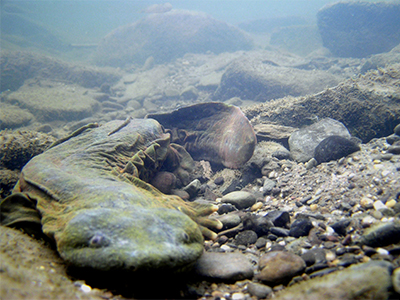
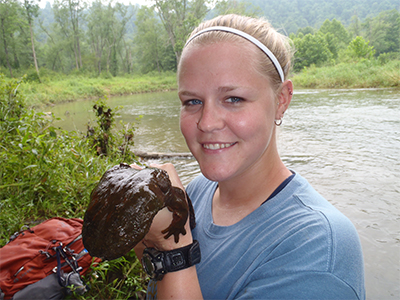
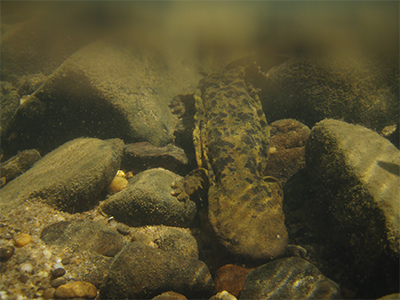
Habitat
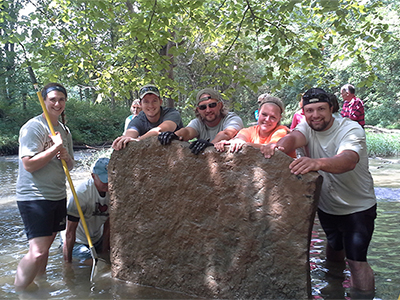
The eastern hellbender is one of the most important aquatic species found in Pennsylvania. This solitary, nocturnal creature requires specific habitat conditions to survive. In particular, it generally prefers streams and rivers with good flow, and large substrate for nest rock locations. Its relatively flat head and body allows it to hide under these rocks.
Hellbenders have evolved specific predation habits which focus almost exclusively on crayfish. In winter, when crayfish become less active, hellbenders will feed on several minnow species and hellgrammites.
Hellbenders also require exemplary water quality in order to survive and reproduce. These salamanders can live for a long time—up to fifty years – making their presence a great indicator of the long-term health of a stream.
Threats
Because the eastern hellbender relies so heavily on clean water, any changes in water quality can have negative impacts on species populations. In Pennsylvania, the hellbender faces many threats including habitat loss and degradation from dams, poor agricultural practices, heavy logging and acid mine drainage effects.
Research
The Western Pennsylvania Conservancy began monitoring hellbender populations in 2007, attempting to document as many populations as possible since the animals’ complete distribution is unknown.
We employ a variety of techniques to find this elusive animal including: lift and turn surveys, SCUBA surveys and a new technique called eDNA, which stands for environmental deoxyribonucleic acid. Using this new technique scientists collect a water sample from the stream, filter it and send it to a conservation partner to amplify the DNA. From this sample, we can document whether or not a hellbender is living nearby without completing a lift and turn survey. We are currently employing this technique in new watersheds to hopefully identify new populations of this charismatic species.
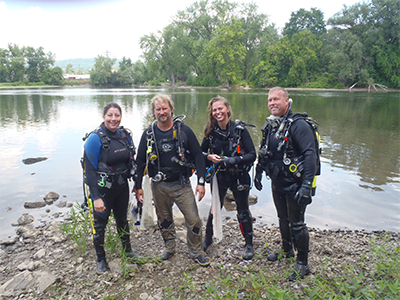
For More Information:
Watershed Conservation Program
Western Pennsylvania Conservancy
1067 Philadelphia Street, Suite 101
Indiana, PA 15701






